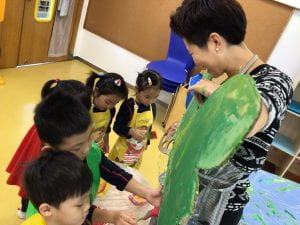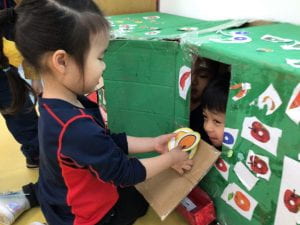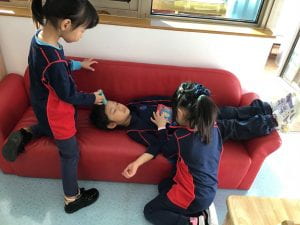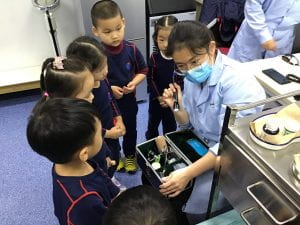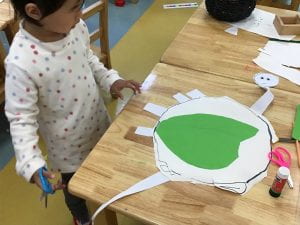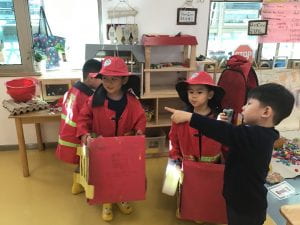Written by: Suzanne Watt & Rainbow Duan, K3 Leaders
The early years of a child’s education is fundamental to the progress of their academic, social, emotional and physical development. It is well known that children learn best through their engagement with the world around them. It is for this reason that in the ECE at YCIS we follow a child led, play-based curriculum allowing the curiosity of the group or individual student to direct the project or theme that we then teach our skills around. This means that what and how we teach is dynamically coordinated with what our students want to learn and their individualised skill level at each developmental stage. This approach appeals to children’s natural curiosity and desire to engage in experiences based on their interests, strengths and developing skills as they make sense of their world around them. Our highly trained co-teachers use the children’s ideas and collaborate together to move their learning forward.
In our K3 classrooms, you will see many different, exciting projects occurring. Each class follows their students’ interests which allows the students to develop curiosity, discover and create knowledge through their environment whilst encouraging skills such as problem solving and resilience. Each class may look different to an outsider; however, the main principles and objectives are continually being taught in each ECE classroom. We believe that eachof our classrooms area ‘unique’ learning space that fosters a curiosity and willingness to learn and continually develop.
Within our K3A classroom, the teachers found that the children were becoming more and more interested in dinosaurs. They would use the resources that had been placed out whilst also re-enacting what dinosaurs do. This is how the topic of Dinosaurs became K3A’s project. The K3A studentseven had our Artist In Residence, Haruka, join them to create a large dinosaur for the corridor.
Within the K3B classroom, the teachers noticed that the children would consistently use the medical equipment and act out being in a doctor’s surgery. As a result, the teachers planned visits to see the on-site nurses in the health care room and a virtual visit to a local clinic has also been arranged for the children so they could witness real life experiences of what medical professionals do.
K3C’s project came from a group time where the class teachers were reading ‘The Very Hungry Caterpillar’. From this, the children were asking lots of questions such as how do caterpillars turn into butterflies and what we need to eat to stay healthy. Again, our amazing Artist In Residence came to create some wonderful artwork with the children.
During a bilingual group time, K3D were discussing what they aspire to be when they grow up. One child explained that he would like to be a firefighter as this was always his dream. This sparked excitement amongst the class and the children began to make their own fire engines and read books about firefighters. They even went on a hunt around the school to find fire safety equipment.
Although all of the projects are completely different, each class still encapsulates the seven learning areas within their classroom environment, group times, displays and resources. The children all learn the fundamental skills and develop in age appropriates ways, but through their own interests. Through this approach, teachers gain a greater understanding of each child’s individual needs, allowing for thoughtful and individualised planning. Children are more motivated to learn and develop a positive attitude towards their learning when they are involved in experiences that are meaningful and encourage them to develop lifelong skills.
